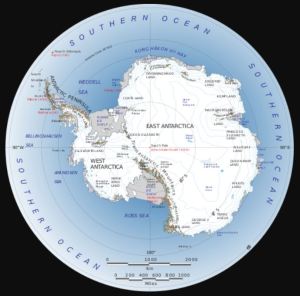Researchers describe this as ‘a major challenge to our current understanding’. The global carbon cycle model may have to be revisited.
More than 100 oceanic floats are now diving and drifting in the Southern Ocean around Antarctica during the peak of winter, reports Phys.org.
These instruments are gathering data from a place and season that remains very poorly studied, despite its important role in regulating the global climate.
A new study from the University of Washington, the Monterey Bay Aquarium Research Institute, Princeton University and several other oceanographic institutions uses data gathered by the floating drones over past winters to learn how much carbon dioxide is transferred by the surrounding seas.
Results show that in winter the open water nearest the sea ice surrounding Antarctica releases significantly more carbon dioxide than previously believed.
“These results came as a really big surprise, because previous studies found that the Southern Ocean was absorbing a lot of carbon dioxide,” said lead author Alison Gray, a UW assistant professor of oceanography. “If that’s not true, as these data suggest, then it means we need to rethink the Southern Ocean’s role in the carbon cycle and in the climate.”
The paper is published Aug. 14 in Geophysical Research Letters.
The data was gathered through the Southern Ocean Carbon and Climate Observations and Modeling (SOCCOM) project based at Princeton University. The National Science Foundation, through its Office of Polar Programs, funded the $21 million effort to place dozens of floating robots to monitor the water around Antarctica and learn how it functions in the global climate system.
“This is science at its most exciting—a major challenge to our current understanding made possible by extraordinary observations from the application of new technologies to study previously unexplored regions of the ocean,” said co-author and SOCCOM director Jorge Sarmiento at Princeton University. Gray conducted the research as a postdoctoral researcher in Sarmiento’s research group.
“Our observations have important implications for our understanding of the global carbon cycle,” Sarmiento said. “We find that the Southern Ocean is currently near neutral with respect to removal of carbon from the atmosphere, contrary to previous studies which suggest there is a large uptake of carbon by the Southern Ocean. These results can be reconciled if there is a corresponding unobserved carbon uptake waiting to be discovered somewhere else in the ocean.”
Previous winter measurements in the region had come mainly from ships traveling across Drake Passage to supply Antarctic research stations. Those data were few and far between.
“After four years of SOCCOM, the vast majority of information about the chemistry of the Southern Ocean is coming from these floats,” Gray said. “We have more measurements from the past few years than all the decades that came before.”
Continued here.
Abstract and Plain Language Summary here.
via Tallbloke’s Talkshop
August 15, 2018 at 04:54AM

